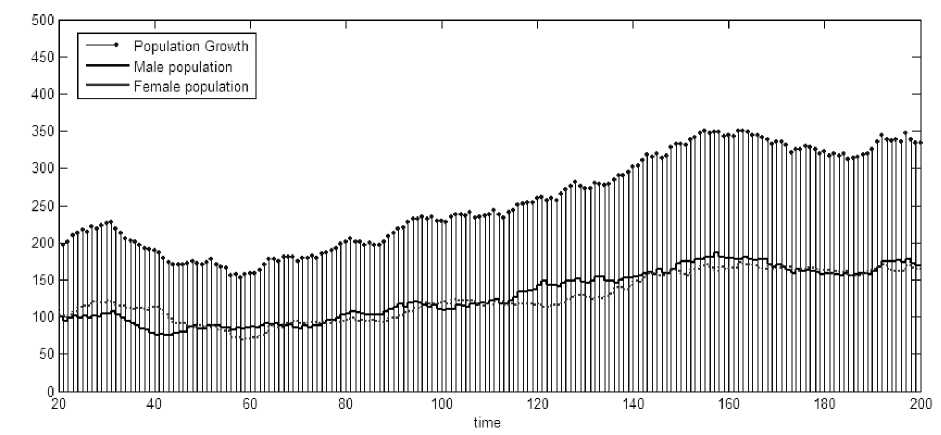accessibility is fulfilled, the next constraints are (in general) merely the sexual qualities
emanate from the corresponding candidates. However, this kind of things has been
recognized in social sciences as boundedness of a social actor with their neighbors. A social
agent sociologically cannot be separated from the neighbors of which always to be referred
when a decision is in making. In our model, such boundaries would be different when
mating and how to choose the right one and the one when social choice is in the house.
Furthermore, the size of neighbors for the reference of sexual relationship is made greater
than the ones used in the way to higher the competitiveness of the same sex to attract any
prospects of candidates.
Social sciences are interested most in the idea on how the heterogeneous micro-
properties of the interacting social actors or agents emerging observable collective behavior
recognized as social phenomena (cf. Coleman, 1990: 6-10). This is probably a crucial point
distinguished them to the study of psychology (or evolutionary psychology) that focus most
of the observables in individuals constituting the social system.
The computational simulation based on the model proposed in Situngkir (2007),
however, in such a way bridges the issue of the emergence and the non-linear nature of the
micro- and the corresponding macro-properties. By adjusting the variables denoting the
micro-system of social agent’s cognitive system of sexual preferences, we grow the “living”
structure in computer and dynamically we could observe the bird’s eye view of the
approached social system. If the micro-behavior of the social system is constructed in the
fuzzy approach as described before, we could analyze the global properties, e.g.: the growth
rate of the artificial system, the wealth distribution, and sometimes some analytical
spectacles in observing the correlations among micro-system in the sense of human
sexuality and the mating game.

Figure 2. The computational simulation shows the dynamic equilibria of population growth in the
Ribbon of Love.
Figure 2 shows how the computational simulation yields the equilibria of the
population growth as well as the specific quantitative growth rate of both opposite sexes in
the artificial world. However, we could see a lot more things in the simulation, as depicted
Page | 4
More intriguing information
1. Using Surveys Effectively: What are Impact Surveys?2. ESTIMATION OF EFFICIENT REGRESSION MODELS FOR APPLIED AGRICULTURAL ECONOMICS RESEARCH
3. The name is absent
4. A NEW PERSPECTIVE ON UNDERINVESTMENT IN AGRICULTURAL R&D
5. On the Existence of the Moments of the Asymptotic Trace Statistic
6. The WTO and the Cartagena Protocol: International Policy Coordination or Conflict?
7. Constrained School Choice
8. Spatial patterns in intermunicipal Danish commuting
9. The name is absent
10. REVITALIZING FAMILY FARM AGRICULTURE